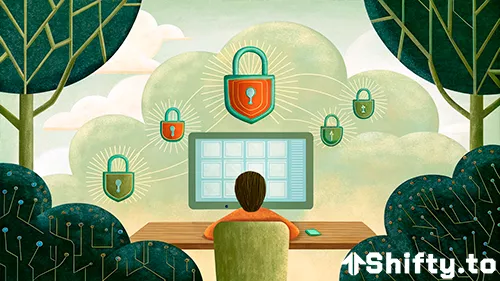Bitcoin, by its nature, does not require users to provide personal identification to create wallets or make transactions. However, achieving genuine anonymity with Bitcoin has become increasingly challenging due to the blockchain's inherent transparency and the growing enforcement of KYC (Know Your Customer) protocols. While blockchain technology ensures data integrity and prevents tampering, it simultaneously reveals transaction details, making it possible to trace Bitcoin movements. For individuals seeking to keep their Bitcoin transactions untraceable, adopting advanced privacy strategies is essential.
Why Untraceable Bitcoin Transactions Matter
As Bitcoin’s adoption grows, its transparent blockchain offers both advantages and challenges. On the one hand, this openness strengthens trust in the system. On the other, it exposes users to potential monitoring and breaches of financial privacy.
By ensuring Bitcoin transactions remain untraceable, users can prevent third parties from linking their financial activities to personal identities. This added layer of privacy safeguards sensitive data and keeps transaction details confidential. Moreover, untraceable transactions empower individuals to maintain financial freedom, bypass restrictions imposed by centralized institutions, and protect themselves from targeted actions. For many, anonymity is a cornerstone of financial independence.
Proven Methods to Achieve Bitcoin Anonymity
Although Bitcoin is not inherently anonymous, various methods can significantly enhance privacy. Below are the most effective strategies to make Bitcoin transactions harder to trace:
1. Hide Your IP Address and Online Activity
Bitcoin’s peer-to-peer network allows connected devices to potentially log IP addresses associated with transactions. To mitigate this risk, users should conceal their IP addresses using privacy tools such as:
VPNs (Virtual Private Networks): These mask your actual IP address, making it difficult to trace your online location.
Tor Browser: By routing internet traffic through multiple encrypted nodes, Tor helps anonymize online activity, including Bitcoin transactions.
Using a VPN in combination with Tor provides a robust shield, significantly reducing the chances of being traced.
2. Use Unique Bitcoin Addresses
A key principle for maintaining anonymity is to use a new Bitcoin address for every transaction. Since all transactions on the blockchain are publicly recorded, reusing addresses links multiple transactions together, potentially revealing patterns. By generating unique addresses for each transaction, users break these links and enhance privacy.
Additionally, employing multiple wallets—one for personal use and another for business—further separates financial activities and reduces traceability.
3. Avoid Publicly Sharing Wallet Addresses
Posting Bitcoin wallet addresses on public platforms, such as social media or forums, can compromise anonymity. Once an address is publicly associated with a user, it becomes easier to track their financial history. Keeping wallet addresses private ensures that transaction details remain detached from your identity.
4. Leverage Bitcoin Mixers
Bitcoin mixers, such as Shifty, play a vital role in enhancing anonymity. These services blend multiple users' coins in a pool and redistribute them to new addresses, effectively severing the link between sender and recipient. Shifty, powered by the CoinJoin protocol, offers enhanced privacy for Bitcoin transactions while also supporting Ethereum. Users benefit from a guarantee letter signed with PGP and Bitcoin signatures, ensuring trust and security.
For those seeking higher anonymity, Shifty’s reputation as a reliable and user-focused service makes it an optimal choice.
5. Buy and Sell Bitcoin with Cash
Using cash to purchase Bitcoin eliminates digital traces entirely. Transactions conducted face-to-face with sellers or through trusted peer-to-peer platforms allow users to acquire Bitcoin without undergoing KYC verification. Always prioritize safety by meeting in public places and verifying the legitimacy of the transaction.
6. Utilize Bitcoin ATMs
Bitcoin ATMs provide another method for acquiring Bitcoin anonymously. These machines allow users to exchange cash for Bitcoin without the need for online accounts. However, some ATMs impose limits on anonymous purchases or require partial identification for higher amounts. Additionally, ATM locations with surveillance cameras may compromise privacy.
7. Peer-to-Peer Marketplaces
Decentralized P2P platforms connect buyers and sellers directly, enabling private Bitcoin transactions. Many of these platforms support cash payments, allowing for fully anonymous exchanges. When using P2P marketplaces, ensure the platform’s credibility and take precautions to avoid scams.
8. Timing Transactions During High Network Activity
Conducting transactions during periods of high blockchain activity adds an extra layer of anonymity. A congested network processes numerous transactions simultaneously, making it harder to isolate and trace individual transfers.
Conclusion
Achieving untraceable Bitcoin transactions requires a combination of technical tools and privacy-conscious behavior. While Bitcoin itself offers only pseudo-anonymity, services like Shifty, along with best practices such as using unique addresses and concealing your IP, significantly enhance transaction privacy. By employing these strategies, users can maintain control over their digital assets and financial information while minimizing the risk of exposure.


